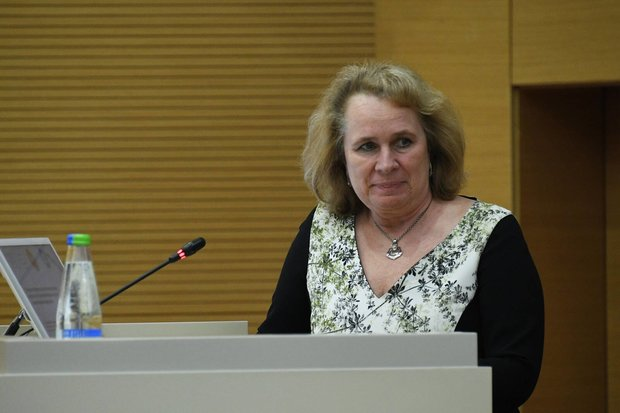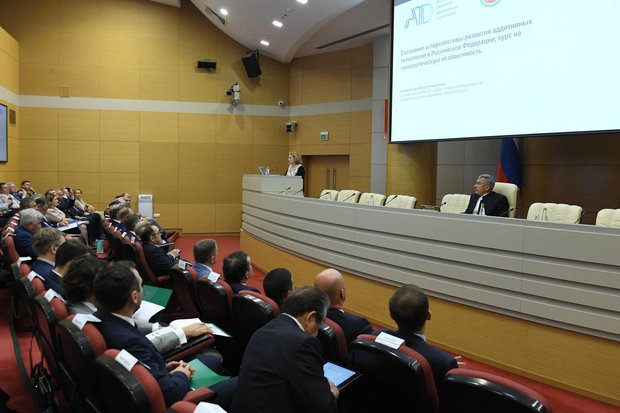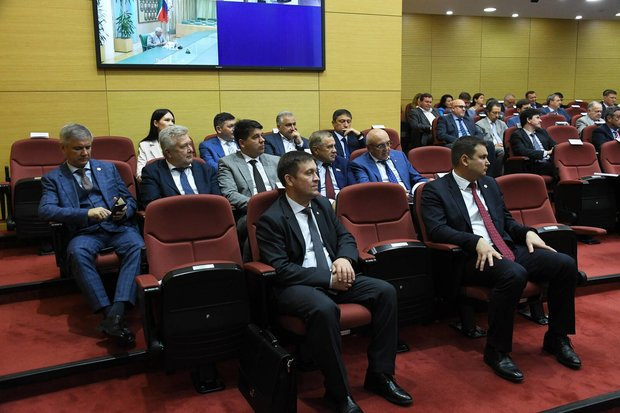‘The finished product is made in six days instead of 60, productivity rises 25 times!’
How scientists of federal technological universities persuaded managers of industrial companies to switch to 3D metal printing

“The future of additive technologies is already here — the first rocket assembled from engines and spare parts printed on a 3D printer was launched into space on 29 March 2023. Hence, there is a question for opponent industrial companies: if they learnt to make rockets in two months, what will our competitive ability be like in the future?” Albert Gilmutdinov urged the audience to think about the introduction of additive technologities. At a board meeting of Tatneftekhiminvest-holding, a big public of Tatarstan top managers listened to how much European innovations in spare part production progress in our country. A technology integrator in the country presented the first selective laser welding units and a mobile repair complex, the groundwork of the republic’s was discussed too. However, a serious talk on this topic will take place at a Russian forum of additive technologies by Rosatom state corporation in late November in Kazan.
Additive technologies first settled at KAMAZ
The June board meeting of Tatneftekhiminvest-holding was totally dedicated to the introduction of additive technologies in the industry. It was impossible to miss or leave this meeting earlier because the board chairman elections and the appointment of the holding’s director general were scheduled for that day. This is why the full hall of managers of big industrial enterprises listened to Russian achievements. It is yet hard for many to believe that engines or blades for aviation equipment can be printed. The fourth speaker on the agenda had to persuade that additive technologies had prospects in the country.
Executive Director of the Association for the Development of Additive Technologies Olga Ospennikova presented the big picture of this segment. According to her, the demand for these technologies in the world stagnated as early as before 2022, but a significant rise in mechanical engineering and the production of consumer goods has started since this year. Consumption is estimated to reach $25.5 billion by 2024.
“The market will rose to $72.5 billion by 2023,” she said citing analytic data of Wohlers Associates.

According to the organisation, such Western companies as Stratasys SLN Solutions are now leading the market but they are gradually replaced by Chinese businesses. Due to this, the market is going to grow by $700 million, she assumes resting on world experts. “There happened market redistribution, China is stepping onto the stage. Metal printing is the most claimed segment,” she noted and added that if in 2021 these technologies were widely used in global aviation and space, there was a shift towards automotive engineering and civil products in 2022.
In contrast, in Russia, additive technologies are used in the Military and Defence Complex. “A serious rise in aviation and engine engineering. The focus on the Military and Defence Complex. There is some accent in ship building and the oil and gas sector,” claimed Ospennikova. In her opinion, these technologies were just in an embryonic form as early as five years ago, now 126 enterprises in the country have serious competencies in all components of additive technologies. In Tatarstan, additive technologies settled at KAMAZ that signed an agreement with Rosatom, noted the speaker. The signing of an agreement with the mechanical engineering cluster of Tatarstan became an impulse for their promotion.
The speaker thinks that it is necessary to create a centre for additive technologies in Tatarstance because the industry is diverse here. “SIBUR actively introduces them, makes a contribution to the development of centres for additive technologies. It is necessary to closely work with the region’s enterprises,” thinks Ospennikova.

“The development goes well and quick where there is support”
Rosatom’s subsidiary is the sector’s integrator promoting these technologies in the country. Rusatom-Additive Technologies signed an agreement with the government of Russia agreeing on a development road map. Director General of the company Ilya Kavelashvili presented new Russian equipment developed by the company to introduce innovations, including the creation of products using additive technologies and 3D printers.
“Two selective laser welding units will be delivered this year. One of them has a 300mm to 300mm part design field, the other does 600mm to 600mm. Seven units have been put into operation. The delivery is next year,” he said.
He put an example of a nozzle diaphragm that was produced in the selective unit. “The engineer got the product in two weeks instead of six months. If it was made in the old way, it would take eight months and it would cost 2 million rubles. Now it is made in 1.5 months and costs 500,000 rubles,” Kavelashvili stressed. He showed the new unit on slides.
Additive technologies became widely spread in repairs. Rusatom presented MARPAK — a repair set. According to the representative of the company, the spare part that needs to be repair can be printed on the site. “Such a mobile set was produced and sent to the special military operation zone. 100 military machinery pieces have been repaired,” he said.

The speaker is sure that additive technologies can pave a road in production if there is support from the top official: “The development goes well and quick where the head of the corporation, the chief engineer or technologist support.”
Rais’ aide Albert Gilmutdinov said Tatarstan also had its own groundwork in this area. So Kazan National Research Technological University is going to launch two projects in cooperation with Rosatom, they are at the final stage of signing. The first one is about the development of plasma torch, the heart of a new generation of technologies. The device is designed to treat powders a 3D model is made from with plasma. The second one is a unit producing powders from different metals, a part is printed from them afterwards.
“I was at a Siemens plant in Finland five or six years ago where there is a shop of additive technologies. They already had tens of devices, not just two or three — the whole shop was equipped with them,” the speaker said.
According to him, Russian units allow producing “a finished product in six days instead of 60, productivity rises 25 times, it is a fact.”
But industrial companies still have a stereotype that additive technologies are interesting and expensive. “Obviously, additive technologies aren’t going to replace everything, but there are growing applications areas. The future of additive technologies is already here — the first rocket assembled from engines and spare parts printed on a 3D printer was launched into space on 29 March 2023. Hence, there is a question for opponent industrial companies: if they learnt to make rockets in two months, what will our competitive ability be like in the future?” Gilmutdinov asked a rhetoric question.
The Tatarstan rais claimed that the republic should prepare for a forum on additive technologies in Kazan: “We should prepare our sites to create these competence centres in Tatarstan.”
During the meeting Rustam Minnikhanov was chosen as board chairman of Tatneftekhiminvest-holding, Rafinat Yarullin was appointed as director general of the holding.